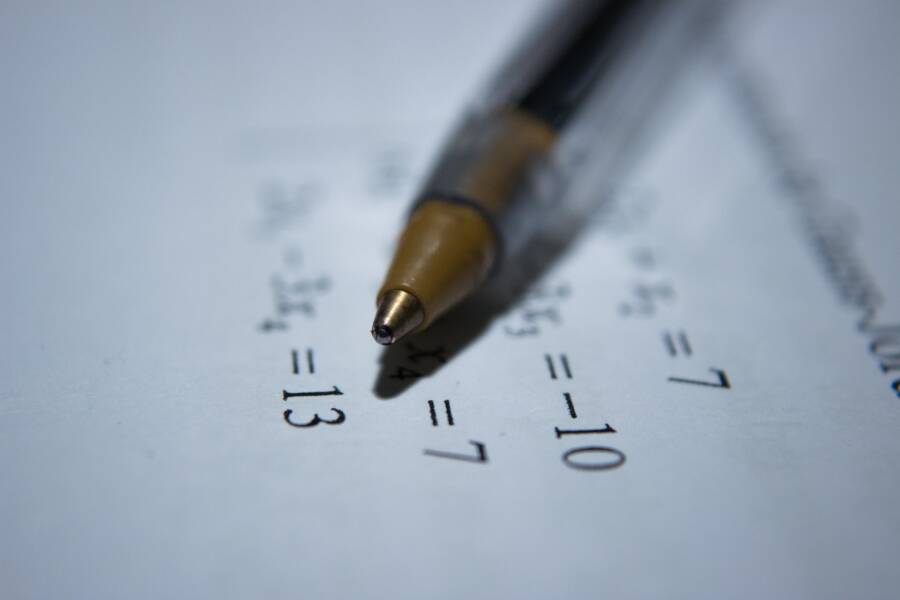Literature and mathematics, seemingly disparate disciplines, have shared a profound and intriguing relationship throughout history. From Lewis Carroll’s whimsical exploration of logical paradoxes in “Alice’s Adventures in Wonderland” to Dan Brown’s intricate codes and puzzles in “The Da Vinci Code,” authors have woven mathematical concepts into the fabric of their storytelling. This article takes you on a captivating journey through the pages of literature, unraveling the mathematical threads that have enriched narratives and engaged readers in the realm where imagination meets logic.

Lewis Carroll’s Wonderland of Logic
One of the earliest instances of mathematics intertwined with literature is found in Lewis Carroll’s “Alice’s Adventures in Wonderland.” Carroll, a mathematician himself, incorporated logical paradoxes and mathematical concepts into the fantastical world Alice encounters. The White Rabbit’s pocket watch, which defies the conventional passage of time, reflects the timeless nature of mathematical truths. The Cheshire Cat’s ability to disappear and reappear aligns with the unpredictability of quantum physics, creating a whimsical blend of logic and imagination.
Carroll’s most famous mathematical creation, the Queen of Hearts, epitomizes mathematical precision taken to absurdity. Her command for the beheading of anyone who fails to comply with her rule, “Off with their heads!” reflects the uncompromising nature of mathematical logic, where the consequences of a false statement can be severe. Carroll’s playful use of logic in “Alice’s Adventures in Wonderland” laid the foundation for future authors to explore the marriage of mathematics and literature.
The Golden Ratio in Nature and Art
Moving beyond Wonderland, the golden ratio, a mathematical constant with aesthetic appeal, has found its way into literature. The golden ratio, approximately 1.618, represents a proportion that appears aesthetically pleasing to the human eye. This mathematical concept has been consciously or unconsciously incorporated into various works of literature and art.
Authors like Dan Brown, renowned for his thrillers filled with symbolism and codes, often integrates the golden ratio into his narratives. In “The Da Vinci Code,” Brown explores the golden ratio’s presence in art and architecture, unraveling hidden meanings and connections. The protagonist, Robert Langdon, navigates through the Louvre, decoding clues that lead to a deeper understanding of the golden ratio’s significance in the works of Leonardo da Vinci. Brown’s masterful blending of mathematics and suspense creates a narrative that not only entertains but also educates readers on the inherent beauty of mathematical proportions.
To further enhance your journey into the captivating realm where mathematics meets literature, explore the MathMaster app, a valuable resource designed to help students grasp mathematical concepts faster and with ease: https://math-master.org/.
Codes and Puzzles: Dan Brown’s Mathematical Thrillers
Dan Brown, a former mathematics teacher, has elevated the integration of mathematics in literature to new heights. His novels, such as “The Da Vinci Code” and “Angels & Demons,” are renowned for their intricate codes, puzzles, and symbology. Brown’s protagonist, Robert Langdon, is a Harvard professor of symbology, a fictional discipline that combines the study of symbols with an understanding of their historical and mathematical significance.
In “The Da Vinci Code,” Brown delves into the Fibonacci sequence, a series of numbers in which each number is the sum of the two preceding ones (0, 1, 1, 2, 3, 5, 8, and so on). This sequence, found in nature and art, becomes a key element in deciphering codes and unraveling the mystery at the heart of the novel. The mathematical precision of the Fibonacci sequence adds an intellectual layer to the suspenseful narrative, engaging readers in a thrilling quest that transcends traditional storytelling.
Beyond Brown’s use of specific mathematical concepts, his novels often explore the broader theme of the conflict between science and religion. The juxtaposition of ancient symbols, modern science, and religious institutions in his works creates a rich tapestry where mathematical reasoning becomes a bridge between seemingly opposing forces.
The Symbolism of Numbers
Authors have long utilized numbers symbolically to convey deeper meanings and themes in their works. Whether it’s the biblical significance of the number seven, representing completeness and perfection, or the mysterious allure of the number thirteen, associated with superstitions, numbers add layers of complexity to literary narratives.
In literature, numbers can represent order or chaos, harmony or discord. Lewis Carroll, in “Through the Looking-Glass,” introduces the idea of a world behind the mirror where time runs backward. The chessboard setting and the symbolic movement of the chess pieces reflect mathematical patterns, emphasizing the structured and ordered nature of the narrative.
Similarly, the use of prime numbers in literature, such as in Mark Haddon’s “The Curious Incident of the Dog in the Night-Time,” can convey a sense of uniqueness and individuality. The protagonist, Christopher Boone, who has a keen affinity for prime numbers, sees the world through a mathematical lens, providing readers with a unique perspective on the narrative.
Conclusion
From Lewis Carroll’s imaginative Wonderland to Dan Brown’s cryptic thrillers, the infusion of mathematics into literature has created a symbiotic relationship that stimulates both the intellect and the imagination. Authors, whether consciously or intuitively, have recognized the narrative potential of mathematical concepts, using them to enhance the depth and complexity of their stories.
The marriage of mathematics and literature invites readers to explore new dimensions of storytelling, where abstract ideas and logical reasoning converge with the creativity of the human mind. As we continue to delve into the pages of novels that weave mathematics into their narratives, we find ourselves not only entertained but also enlightened by the intricate dance between numbers and words.
TechnologyHQ is a platform about business insights, tech, 4IR, digital transformation, AI, Blockchain, Cybersecurity, and social media for businesses.
We manage social media groups with more than 200,000 members with almost 100% engagement.